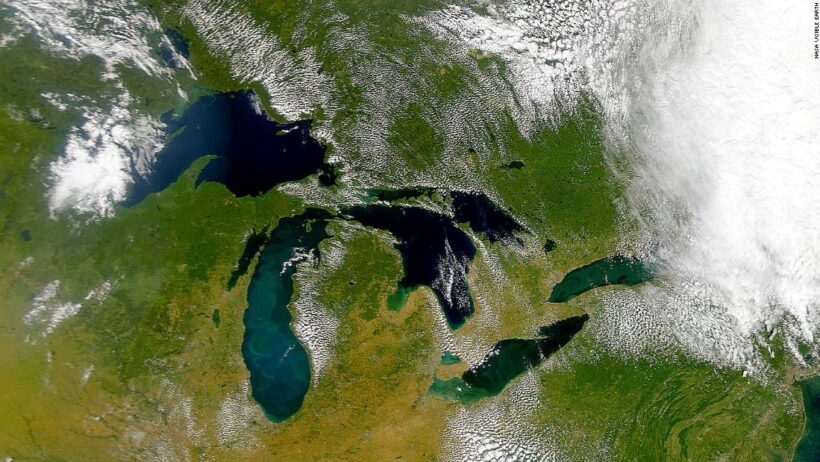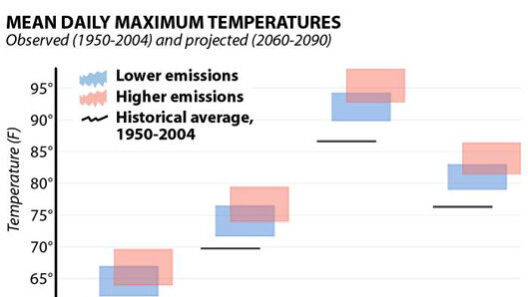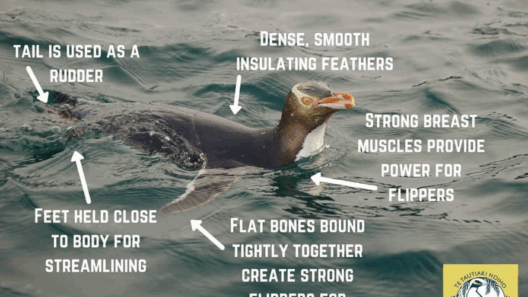The climate of Michigan is a vivid tapestry interwoven with the influences of its geographical position, the vast expanse of the Great Lakes, and the shifting patterns of global weather phenomena. This Midwestern state’s climate is characterized by four distinct seasons that each present their unique features and challenges. From robust snowfalls in winter to the sultry days of summer, Michigan’s climate fosters a diverse ecosystem and offers endless fascination to both residents and visitors alike.
To understand Michigan’s climate, one must first appreciate the geographical nuances of the region. Bordered by Lake Superior to the north, Lake Michigan to the west, Lake Huron to the east, and Lake Erie to the southeast, Michigan’s location significantly impacts its weather. The Great Lakes act as formidable regulators of temperature and humidity, mitigating extremes and fostering a generally temperate climate. This moderating effect contributes to Michigan’s reputation for having one of the most diverse weather experiences in the country.
Winter in Michigan is notoriously harsh, particularly in the Upper Peninsula, where heavy snowfall blankets the landscape. The lake-effect snow phenomenon plays a pivotal role in this season, wherein cold air passing over the relatively warmer Great Lakes accumulates moisture before depositing it as snow over the land. This can lead to extraordinary snow totals, making the region a haven for winter sports enthusiasts, yet it also compels citizens to adapt and prepare for the rigors of the season. The visual beauty of snow-covered trees and frozen lakes garners admiration, but beneath the surface, the implications of climate change are palpable.
As global temperatures rise, the traditional winter season is subject to perturbation. Observations suggest that winters are becoming shorter and milder. The impact is far-reaching, affecting not only recreational activities but also wildlife populations that depend on the cold months for hibernation and nourishment. The economic ramifications are also significant, particularly for industries reliant on winter tourism. A shift in this climatic cycle hints at deeper environmental changes that provoke concern among ecologists and climate activists alike.
Spring in Michigan emerges like a phoenix rising from the frost, bringing a burst of vitality and color. Typically, this season witnesses the melting of snow and the rejuvenation of flora. However, conditions can vary dramatically year-to-year. This variability can be attributed to an array of atmospheric interactions, including the influx of moist air from the Great Lakes and prevailing wind patterns that can shift unpredictably. Consequently, one spring may usher in a robust display of blooms and mild temperatures, while another might bring late frosts, threatening budding crops and altering natural cycles.
The onset of summer in Michigan is marked by a distinct warmth, characterized by higher humidity and frequent thunderstorms, particularly in the southern regions. Summer temperatures can escalate into the high 80s and 90s Fahrenheit. The storms, sometimes severe, create dramatic displays of natural fury. The phenomenon of “Tornado Alley” stretches into parts of southern Michigan, underscoring the state’s place within the broader atmospheric dynamics of the Midwest. These storms can lead to property damage and disruptions; however, they also enrich the agricultural lands vital to the state’s economy. Understanding these summer patterns is crucial, as the implications of climate change could exacerbate the severity of these events, prompting a reassessment of preparedness strategies.
Autumn, with its spectacular foliage, creates an alluring atmosphere as communities revel in harvest festivals and scenic drives. The cooler temperatures signal the approach of winter, but climate trends suggest a changing narrative. As warmer weather can extend the growing season, some farmers might embrace the opportunities for extended yields, yet they face new challenges such as pest invasions and unpredictable weather patterns that could devastate crops. This juxtaposition serves as a reminder that climate change offers a dual-edged sword: potential benefits come coupled with significant risks.
Recent studies illustrate that higher carbon emissions have led to increased evaporation from the Great Lakes, resulting in fluctuating water levels that impact natural habitats and human infrastructure. These changes necessitate an acute awareness of how alterations in climate affect fishing communities, conservation efforts, and property values in shoreline towns. Additionally, the rising temperatures not only disrupt seasonal patterns but also threaten the delicate balance of freshwater ecosystems crucial to both the environment and the economy.
The Great Lakes themselves, which account for a staggering portion of the world’s freshwater, are witnessing notable warming trends. Warmer water temperatures can result in the proliferation of harmful algal blooms, which pose health risks to humans and wildlife, and disrupt fishing industries. The interconnectedness of the climate impacts within the Great Lakes basin illustrates the complexity of managing this vital resource amidst impending changes.
Indeed, Michigan’s climate is a multifaceted subject, encapsulating a range of phenomena that engage and perplex those who study its nuances. As individuals and communities grapple with the implications of climate change, it is imperative to foster a sense of stewardship and sustainability. Conservation efforts, research initiatives, and education are crucial to preserving the environmental integrity of this rich region. Through collective action, it is possible to navigate the looming uncertainties of climate change while celebrating the unique wonders of Michigan’s weather.
This exploration of Michigan’s climate, with its distinctive seasonal shifts and profound implications, offers a lens through which to view the broader environmental challenges facing our planet. As we delve into the dynamic interplay of weather, ecosystems, and human interaction, it becomes increasingly clear that the history and future of Michigan’s climate deserve our unwavering attention.






